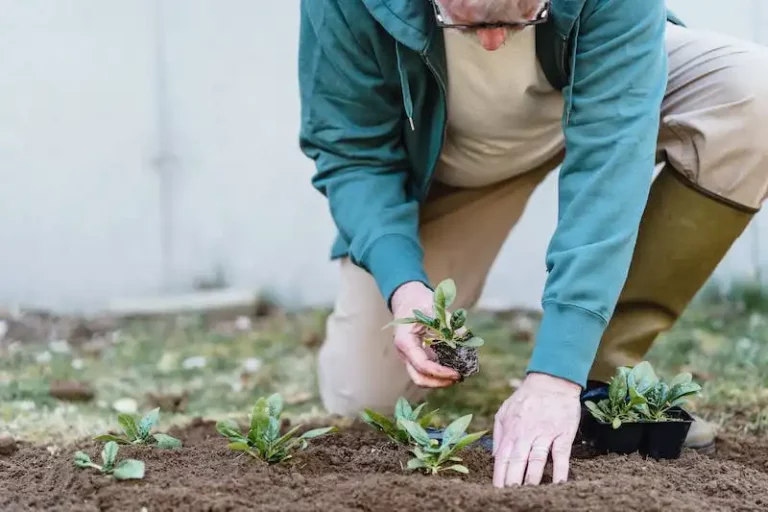Creating a small wildlife pond in your garden can be a major attraction for animals and plants. However, maintaining a healthy and balanced pond requires regular care and attention. Algal blooms, overgrown plants, and dirty water can all disrupt the delicate ecosystem of your pond. To prevent these issues, proper cleaning and maintenance should be done every season.
One of the major tasks in pond maintenance is the removal of excess algae and leaves. Algae can quickly take over the surface of the water, making it difficult for other plants and animals to thrive. Regular cleaning and clearing of the algae will help keep the water clear and prevent the loss of oxygen. Additionally, removing fallen leaves will help prevent them from decomposing and polluting the water.
Another important aspect of pond care is keeping the plants in check. While aquatic plants are essential for maintaining the balance in the pond, they should be properly managed to avoid overgrowth. Overgrown plants can block light and oxygen from reaching the water, which can lead to the death of other plants and animals.
During autumn, it is advisable to cut back and remove any overgrown plants to prepare the pond for the next season. Waterlilies and other plants with large leaves should be pruned to prevent them from spreading too much. Smaller plants, such as water forget-me-nots, should be edited to keep them from overcrowding the pond.
Regular cleaning and maintenance of your wildlife pond are important to ensure the health and well-being of the plants and animals that live there. By taking the time to care for your pond, you create a pleasant and calming environment for yourself and provide a source of habitat for a variety of wildlife.
Remember, a healthy pond begins with proper care!
How to Clean a Wildlife Pond
If you wish to clean your wildlife pond, you have two options: either do it yourself or hire someone to do it for you. Cleaning the pond yourself can be a rewarding experience and also a good way to connect with nature. However, it requires some physical effort and knowledge about pond care.
Before you start cleaning, make sure you have the necessary tools, such as a net, a pond vacuum, and a pair of gloves. Begin by removing any fallen leaves or branches from the surface of the pond, as well as any excessive algae or invasive plants. Careful removal of these materials helps maintain a clean habitat for your pond’s wildlife.
Next, it’s important to clear the pond of any open water sources, as well as any debris at the bottom. This can be done using a net or a pond vacuum. Make sure to be careful when removing the debris, as some wildlife, like frogs or tadpoles, may be living in it. If you find any animals or eggs, carefully relocate them to a safer area.
After you have cleared the pond, it’s time to clean the foliage around the pond. Trim any overgrown plants and remove any overhanging branches that may be obstructing the pond. This will prevent seeds, leaves, and other debris from falling into the pond and causing problems. It’s also a good idea to remove any invasive plants that may be taking over the pond, as they can harm the natural habitat.
In order to maintain a healthy pond environment, it is recommended to clean your wildlife pond at least once a year, preferably in the autumn or winter when most of the plants have died back. This calm period is the best time to remove any accumulated debris and prevent algal overgrowth.
When cleaning your pond, you should also consider providing a source of water for the wildlife. This can be a smaller container or a bird bath placed nearby. This will help attract birds and other wildlife to your pond, creating a better habitat overall.
Once you have completed the cleaning process, it’s important to take preventative measures to minimize future problems. Regularly check the pond for excessive algae growth, and clear any fallen leaves or other debris. Remove any weeds or overgrown plants that may hinder the water flow. This proactive approach will help keep your pond clean and healthy.
| Categories: | Wildlife Pond Care |
|---|---|
| Tags: | Wildlife pond, Pond cleaning, Pond care, Pond maintenance, Algae control |
If you want to learn more about wildlife pond care and maintenance, check out our other helpful articles:
- How to Create a Wildlife Pond
- Choosing Plants for Your Wildlife Pond
- Tips for Attracting Wildlife to Your Pond
Don’t forget to visit our website’s footer for more great resources on wildlife pond care and maintenance.
Wildlife pond care maintenance
Maintaining a wildlife pond is important to ensure the health and well-being of the animals and plants that call it home. Regular care and maintenance will help prevent problems and keep your pond looking beautiful.
One of the main things you’ll need to do is remove any excess foliage and weeds from the water. This can be done with a net or by hand, ensuring that you remove any fallen leaves or grass that may have found its way into the pond. Excessive plant growth can also be a problem, so it’s important to regularly thin out or remove invasive plants.
Cleaning the pond itself is also important. This can be done either in late autumn or early spring, when the water is clear. Use a net or a pond vacuum to remove any debris or excess algae. It’s also a good idea to brush the sides of the pond to remove any build-up of algae or other substances that may have attached themselves.
If you have fish or tadpoles living in your pond, it’s important to provide them with a clean and healthy environment. This includes regular water changes and ensuring that the water is neither too warm nor too cold. It’s also a good idea to keep an eye out for any signs of illness or distress in the animals, as this may indicate a need for extra care.
Another important aspect of wildlife pond care is maintaining a balanced ecosystem. This means keeping the number of predators, such as birds or small mammals, in check to prevent loss of tadpoles or other small animals. Providing hiding spots, such as rocks or plants, can help the smaller animals in your pond feel safe and secure.
Preventative measures can also be taken to keep your pond healthy. For example, using a blanket of straw or small lilies can help prevent excessive algae growth. It’s important to remember that while some algae is normal and healthy for a pond, too much can cause problems.
In summary, caring for and maintaining a wildlife pond is essential for the well-being of the plants and animals that rely on it. Regular cleaning and preventative measures, such as removing excess foliage and algae, will help keep the pond healthy and ensure its longevity.
| Maintenance needs | When to do |
|---|---|
| Remove excess foliage and weeds | Regularly |
| Clean the pond | Late autumn or early spring |
| Provide a clean and healthy environment for fish and tadpoles | Ongoing |
| Maintain a balanced ecosystem | Ongoing |
| Take preventative measures to keep the pond healthy | Ongoing |
Weeds and plants
When it comes to maintaining a wildlife pond, it is important to pay attention to weeds and plants. Weeds can quickly take over a pond, choking out other plants and disrupting the delicate balance of the ecosystem. Preventative measures are key to keeping weeds under control.
When choosing plants for your pond, it is best to go with native species. These plants have adapted to the local environment and provide a source of habitat for native animals. Invasive plants, on the other hand, can quickly become a major problem. They can spread rapidly, outcompeting other plants and taking over the entire pond.
Excessive algal growth, such as blanketweed and green algae, is also a common issue in ponds. This is often caused by an imbalance in the water, with excess nutrients from leaves and other organic matter feeding the algae. To prevent this, it is important to regularly clear out any leaves or excessive plant matter from the pond.
In autumn, it is common for plants to die back and produce excess leaves. These leaves can fall into the water and decompose, leading to an increase in nutrient levels. It is important to clear these leaves as they can cause an imbalance in the pond’s ecosystem.
If you wish to introduce waterlilies or other aquatic plants to your pond, it is best to do so in early spring or late autumn. This will give the plants time to establish themselves before the warmer months when weeds and algae are most likely to be a problem.
If you do find yourself with an abundance of weeds in your pond, there are several methods you can use to remove them. Manual removal, such as using a weed rake or pulling them out by hand, is an effective option for smaller ponds. For larger ponds, herbicides or algaecides may be necessary. However, it is important to use these chemicals sparingly and follow the instructions carefully, as they can be harmful to wildlife if used improperly.
Overall, regular maintenance and attention to weeds and plants are essential for keeping a wildlife pond healthy and balanced. By preventing excessive weed growth and maintaining a diverse range of native plants, you can create a thriving habitat for plants and animals alike.



